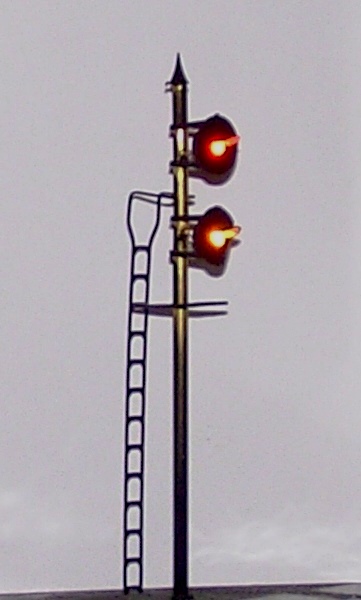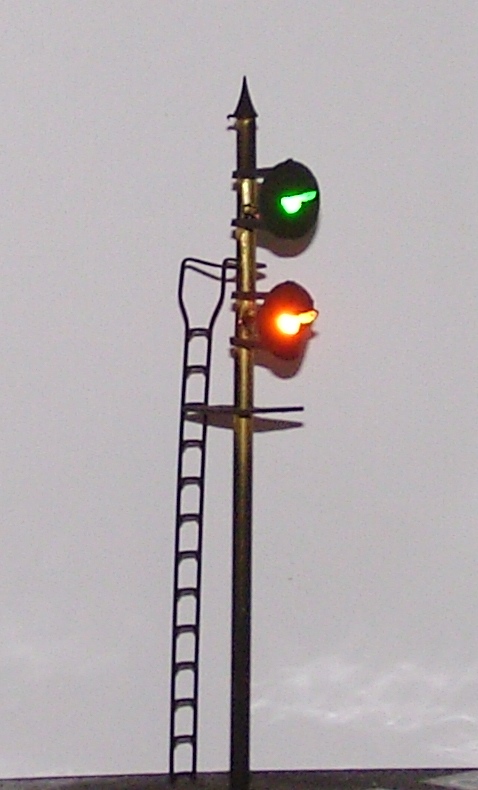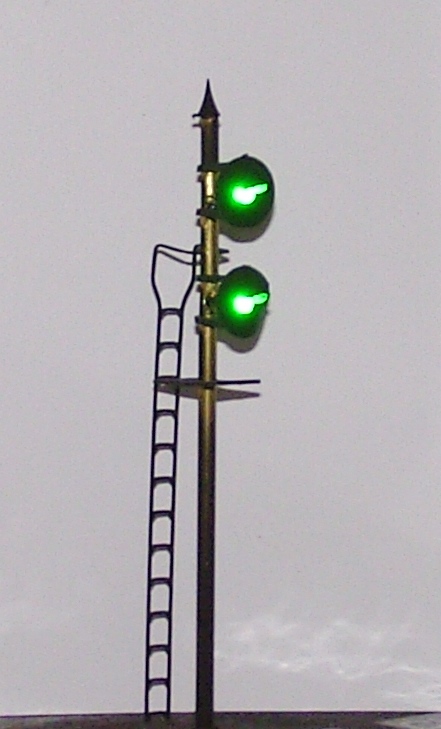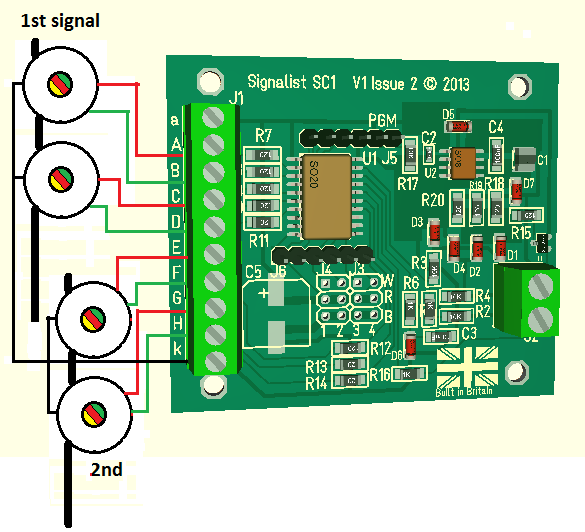Great Western Searchlight Signals



Stop
Caution
Clear(Red over Yellow)
(Green over Yellow)
(Green over Green)
The
Great Western Railway used colour light signals in several places on
busy parts of the network. This followed the practice of twin arm
semaphore signals with a home arm above a slotted distant, the
searchlights displaying the same indication as would be shown by the
semaphore spectacle plates. The signals are capable of
displaying three aspects as shown above, Clear - proceed, the next two
blocks are clear, Caution - proceed, the next block is clear but be
prepared to stop at the next signal, and Stop.
While
this signalling was installed by the Great Western in the 1930s it
continued in use until after the demise of steam on the Western Region
in the 1960s. Some of the Great Western signals were modified to the LNER style, notably on the main line out of Paddington near Southall.
The
SC1 can be configured for two Great Western searchlight light signals
by setting CV38=16. Each signal mast is controlled using two turnout
addresses according to the following table:-
Great Western signal operation table for CV38=16
|
Base
state
|
Base+1
state
|
Aspect
|
|
Normal
|
Normal
|
Red
Yellow
|
|
Reverse
|
Normal
|
Green
Green
|
|
Normal
|
Reverse
|
Green
Yellow
|
k
Great Western searchlight signal wiring diagram

If
using JMRI use the GWR-1931 signal system with the signal head
controlled mast driver. Several CV38 settings are possible. Using
CV38=16 for standard accessory protocol (occupies two turnout addresses
per signal) or CV38=129 for extended accessory protocol if your command
station supports it (uses two signal addresses per signal) is the most
efficient configuration method.
- For CV38=16 use any 3-aspect signal mast with the MERG 3-aspect signal head driver.
- For CV38=8 use any signal head controlled mast with the Double Output signal head driver
- For CV38=129 use any signal head controlled mast with the DCC Signal head driver
Visit the
JMRI GWR-1931 signal system to see the
available mast types.
Signalist
GRS style searchlight heads are available to create your own signal masts
Website design by Paul Harman © 2013
